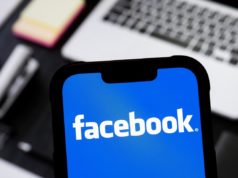NEWS ANALYSIS: After mindlessly censoring an iconic photo from the Vietnam War, then punishing those who complained about the action, Facebook reverses course, making it clear that the real problem is Facebook.
Back in 1972, when I was a young television reporter, a shocking image appeared on the front pages of the world’s newspapers that helped convince many Americans that the nation had to get its military forces out of Vietnam and bring an end to a war that had been going on for more than a decade.
The image, taken by AP photographer Nick Ut, showed a young girl, naked and in agony from severe burns on her back, running in terror from a U.S. napalm attack on her village in Vietnam. That photo, and a few others from that war, changed many people’s opinions about the war and may even have helped speed up the peace process.
Moving to the present day, Aftenposten, a Norwegian newspaper, wrote a story about seven images that changed the face of war. Ut’s iconic photo, so powerful that it won the Pulitzer Prize for photography, was one of the images. Facebook killed it.
When confronted with its decision to take the image down, Facebook said that it violated its standards of decency. It should be noted that Facebook apparently has software that examines such posts and makes the decision. So the decision to censor the photo was automatic and was hardly surprising.
But what happened next was not only surprising, but contrary to normal practices in both social networks and in media. Facebook also removed all discussion of its decision and it then blocked the people who didn’t agree with its decision and had the nerve to mention it. One such person was the prime minister of Norway, Erna Solberg, who was blocked for sending a complaint to Facebook CEO Mark Zuckerberg.
Since that happened, news organizations began running stories about the issue and suggesting that Facebook was abusing its power. Some claimed Zuckerberg was personally responsible for that abuse. The newspaper published an open letter to Zuckerberg, which most thought would have no effect.
But in fact, the letter, and the outrage about Facebook’s censorship, did apparently penetrate to the company’s executive ranks. Several hours after the photo was removed from Facebook, it was back. There’s no word on whether people who complained about that practice have been allowed back on Facebook. I asked Facebook’s media relations folks to explain the change, and a spokesperson sent me a prepared statement.
“After hearing from our community, we looked again at how our Community Standards were applied in this case. An image of a naked child would normally be presumed to violate our Community Standards, and in some countries might even qualify as child pornography,” the statement said.
“In this case, we recognize the history and global importance of this image in documenting a particular moment in time. Because of its status as an iconic image of historical importance, the value of permitting sharing outweighs the value of protecting the community by removal, so we have decided to reinstate the image on Facebook where we are aware it has been removed,” Facebook’s statement continues.







